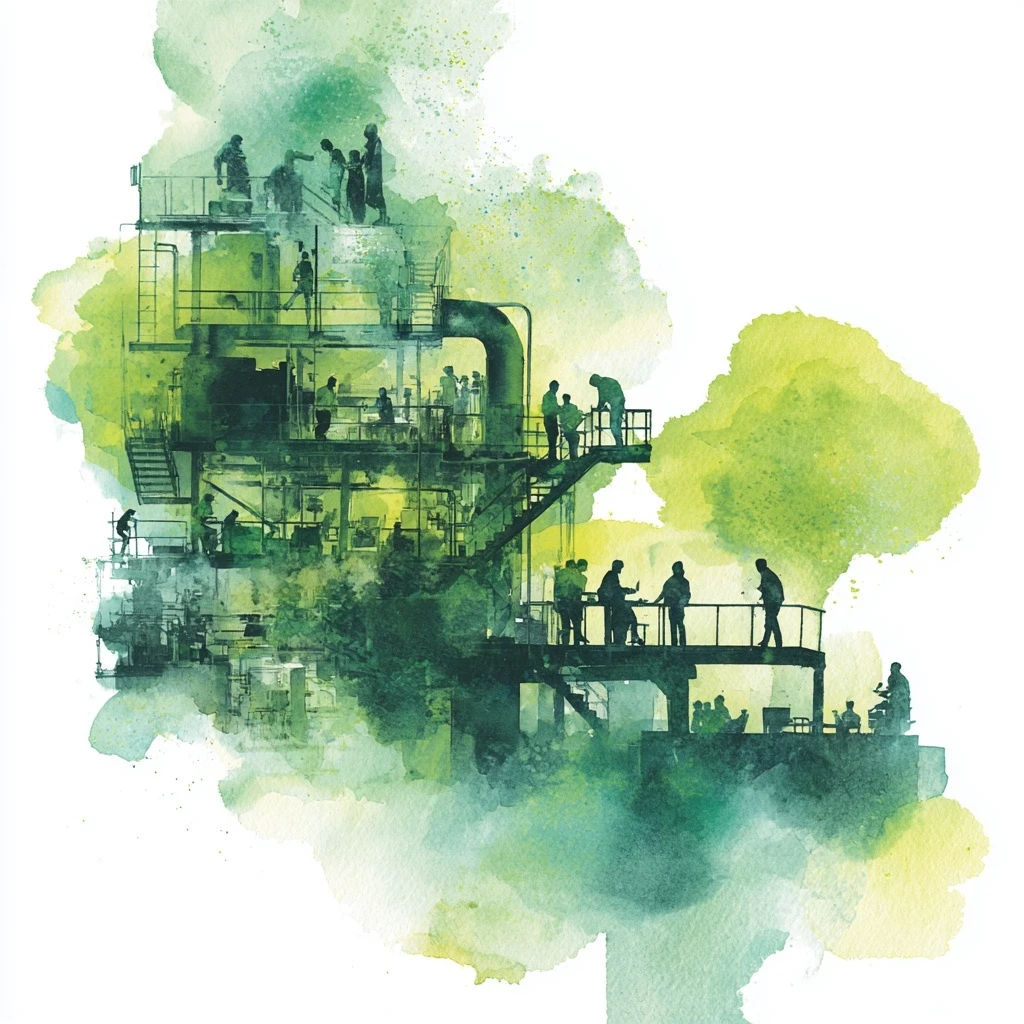How to Create a Sustainable Continuous Improvement Capability: One Global Operator’s Personal Experience (Part 2)
Add bookmark
In last month’s article, I talked about some of the bigger concepts in establishing an enterprise CI capability. This month let’s become more tactical. I want to discuss [what I call] the “Ecosystem” required within the corporation to launch and sustain a CI culture.
1. It's More Than Just Providing Training
There's so much more to building a sustainable CI culture than just offering training. I've seen organizations bring in consultants to focus on training team members in Lean Six Sigma tools and templates then wonder why years later, they still aren't reaping the benefits of the training investment or worse yet, they bring in more consultants to do the training again. Its key to understand building and engraining CI as a sustainable capability requires much more than training. It requires building the "CI Ecosystem". Here's how I defined the CI ecosystem in my time as a CI leader.
2. Establish a CI Center of Excellence (the “CI COE”)
At the heart of the CI ecosystem is the CI Center of Excellence ("CI COE"). The CI COE is responsible for building and engraining the CI culture by working cross functionally and globally. It’s a group of people who wake up every day caring about how to carry the CI torch. It’s for this reason, I highly recommend creating a CI Center of Excellence which reports to the CI leader. What does a CI COE do? The CI COE owns developing [with the business] and driving the CI roadmap which defines the goals of the maturing CI ecosystem within the organization. The maturing CI ecosystem will result in a CI Capability.
3. Build a Maturity Roadmap
I've always seen building a CI capability as a journey. For this reason, I suggest the organization break down their journey into phases and milestones. Many times, I've been asked, “When we will be a CI company?” Often this is asked 2-3 months after starting the journey. To shape, manage and evolve the organization's understanding of what it takes to stand up a sustainable CI culture with all the pieces of the eco-system, I suggest creating a CI roadmap that outlines the key accomplishments by function and as an enterprise that help team members understand the objectives and where the organization is on the journey. Again, I call it a CI maturity roadmap which is the manifestation of the maturity of the organization's CI Ecosystem. The CI COE owns developing, actioning, communicating and evolving this roadmap.
What are the components of the CI roadmap? They include:
- Rewards and Recognition programs
- Communications - sharing success
- Tools, templates, and methods
- Training Programs (yes, this is needed)
- Coaching and mentoring
- Measuring success
4. Rewards and Recognition: Leverage Your Company’s Reward System
Each organization should leverage its reward systems to underscore the importance of CI. So, I encourage thinking about how to reinforce CI achievements at all levels. Maybe every successful "Just Do It" receives a gift card for some nominal amount? Project teams can receive a plaque or a more meaningful award for a significant functional or cross-functional contribution. How about an enterprise award for projects that provide strategic value? Finally, think about an annual 'best of the best" award. People work hard and a rewards system is often short money for the return to the organization in terms of value and motivating people. It’s also an opportunity to reinforce and communicate, the strategy is working and celebrate team successes.
5. Communications: Be Consistent and Focus on Results
It’s important that CI isn't looked at as the flavor of the day. Management teams may come and go but CI should be seen as a constant part of the enterprise’s DNA. Supporting the journey, it’s important to consider how CI accomplishments and the people involved can be showcased to not only celebrate their contributions but also to excite others to get involved. Further, the ongoing communication demonstrates leadership’s continued support for the importance of CI. I've seen communications functionally managed, and I've seen it centrally led as well. Both can work but it’s important to do it, do it consistently, and to give credit to the teams doing the hard work, not to the leadership.
6. Tools, Templates, and Method
Clearly, the tools used in CI take experience to apply. Tools and techniques range from the simple (Pareto chart) to the very complex (Kaizen). I've found it useful to set goals for the organization to pace the organization. For example, people don't start learning to do their personal taxes but starting with the Alternative Minimum tax forms. They start with a simple 1040 form and work their way up the complexity curve. The same concept applies for CI tools. Start somewhere impactful but manageable for the organization then grow. For instance, maybe every project must have a project charter and a simple business case? Then as a next step include a process map and pareto chart. From there, additional, and more complex lean tools (Fishbone diagrams) can be introduced as practitioners become more comfortable and experienced.
7. Training
Yes, I know I said training isn't the only thing needed to build a CI culture, but it is a necessary foundation. After all, it is the common language across the CI ecosystem. So, yes, I suggest in addition to defining CI, choose a lean six sigma tool kit and standardize on it as your global CI common language for problem solving. Further, while you might need to start with outside consulting support to deliver training, I suggest transitioning to internal people delivering the training to their peers. It’s very powerful.
8. Implement Coaching
Like I said earlier, learning to apply CI tools is like calculating your taxes, there's a spectrum from the simple 1040 EZ to extremely complex rules. So, it’s important to realize training alone is not enough. Having trained, capable coaches who can support CI practitioners in more complex CI projects is an important success factor in growing the CI capability. Just like people do not become tax experts taking the basic personal income tax course, people don't go to one CI training then become Kaizen experts nor do they have experience managing an end-to-end value chain project. So, learning on the job from a practical coach who does have the experience will grow your practitioners’ capabilities.
9. Measuring Success
I said earlier everyone needs a WIFM. Individuals want to feel successful. Teams want to feel successful, and organizations want to feel like winners. Functional leaders will need to meet budget commitments. Executives should be expected to develop business improvements to reinvest into new capabilities. For these reasons, I highly suggest tracking the value of CI to the organization. Notice, I did not say focus on headcount reductions from CI. Nothing kills a CI journey faster than making it all about hard savings and headcount reduction. Yes, we run businesses and hard savings matter, but the average team member isn't in it to see their other team members let go. So, make it a balance. Still, measuring functional and enterprise value is important to show how CI helps the organization become more productive, frees up funds for investments and builds organizational confidence. It’s really fun to see the value delivered from CI grow over time! So, I suggest leveraging business cases, track the value, show it in the functional operating budget bridge as well as in the enterprise operating bridge. Frankly, when other lagging leaders see their peers demonstrating the value of their CI programs in their operating reviews via the bridge, it will put organizational pressure on them (which can be a good thing!).
Next month - the final topics to build a sustainable CI capability.






















